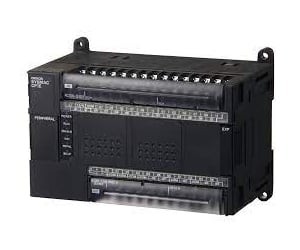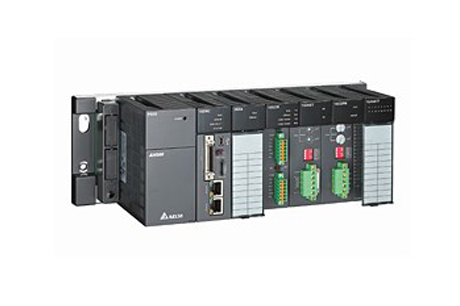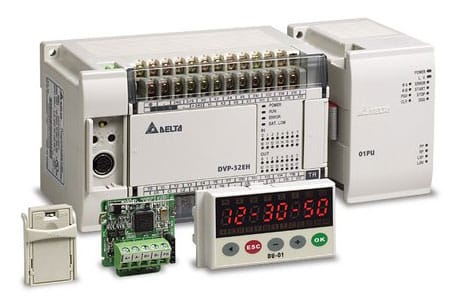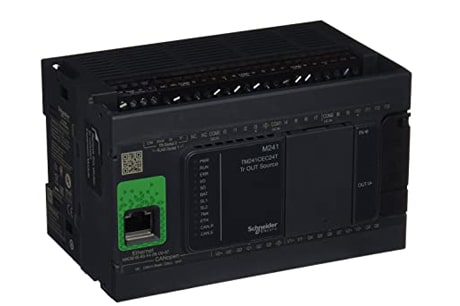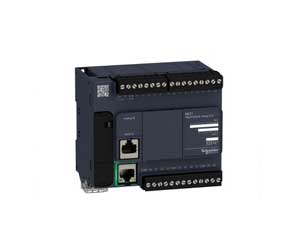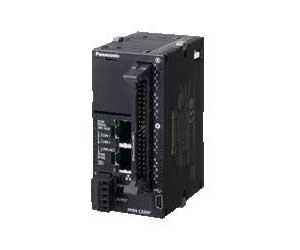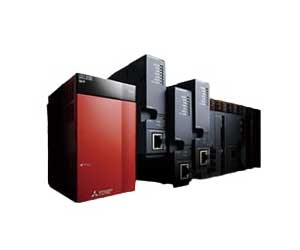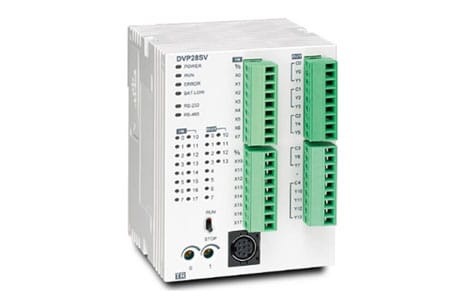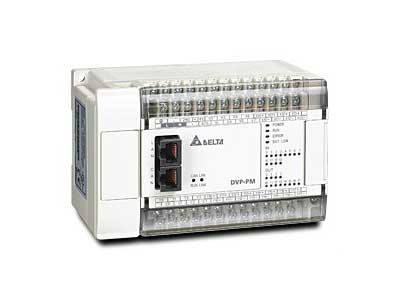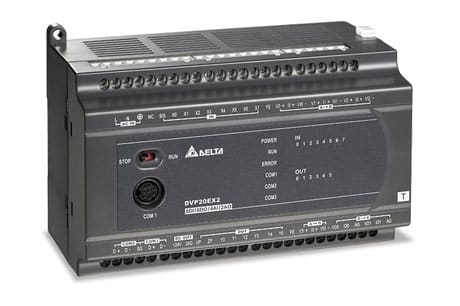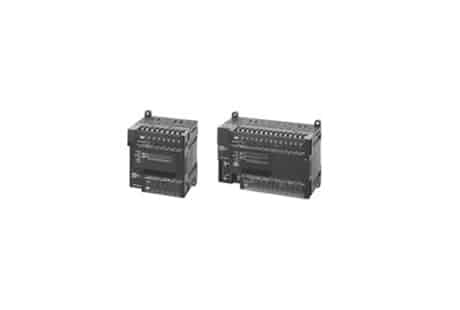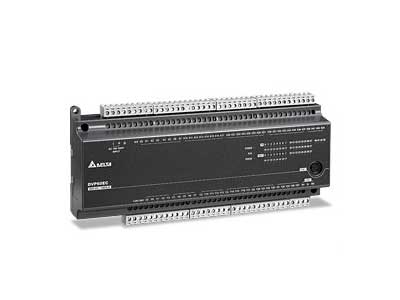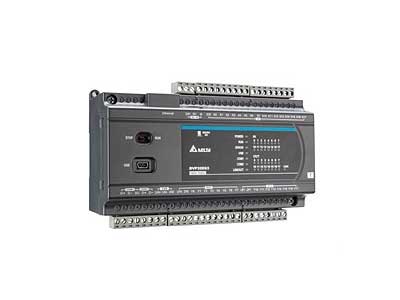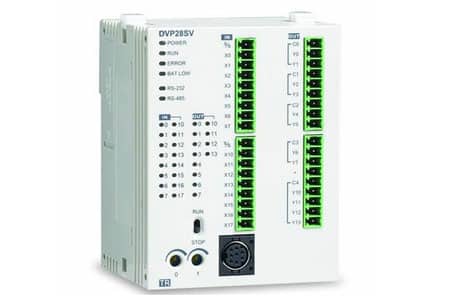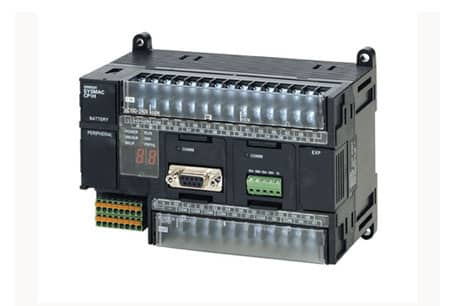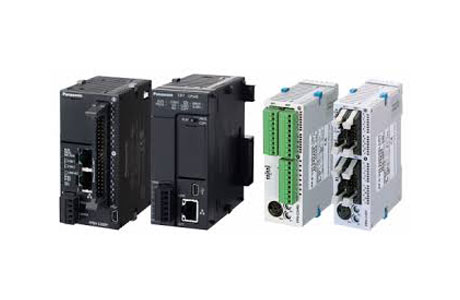Basic Programmable Logic Controllers PLC Guide
Programmable Logic Controllers (PLCs) are devices designed to control and automate various industrial processes. They are widely used in manufacturing, production, and processing industries to control and monitor various processes, such as machine operation, material handling, and assembly lines. A PLC is essentially a digital computer that is specifically designed to control and automate industrial processes.
Before the invention of PLCs, relay logic systems were used to control industrial processes. Relay logic systems were designed using electrical relays, which were wired together to control various devices and machines. These systems were complex and difficult to troubleshoot and required a lot of maintenance. They also lacked the flexibility and programmability of PLCs, making them less suitable for use in modern industrial automation.
Programmable Logic Controllers were introduced as a more advanced and sophisticated alternative to relay logic systems. They offer greater flexibility and programmability, allowing for greater control and automation of industrial processes. PLCs are also much easier to troubleshoot and maintain, making them a popular choice for use in modern industrial automation.
In this guide, we will explore PLCs in greater detail, including their definition, components, operation, programming, and applications. We will also examine the benefits and drawbacks of using PLCs and explore some of the key considerations when choosing a PLC for your industrial automation needs. By the end of this guide, you will have a comprehensive understanding of PLCs and their role in modern industrial automation.
How does a PLC Work?
A PLC works by constantly monitoring the inputs from various sensors and other input devices, such as switches, limit switches, and photoelectric sensors. These inputs are used to control the operation of various output devices, such as motors, solenoids, and actuators. The PLC uses a program, stored in its memory, to control and automate the process based on the inputs it receives.
The basic operation of a PLC can be described as follows:
- The PLC constantly monitors the inputs from various sensors and input devices.
- The PLC processes the inputs using its program, which is stored in its memory.
- Based on the inputs and its program, the PLC outputs control signals to various output devices, such as motors, solenoids, and actuators.
- The output devices respond to the control signals, and the process is automated as a result.
The input/output (I/O) process in a PLC is a critical component of its operation. The I/O process involves the communication between the PLC and the various input and output devices. The inputs and outputs are connected to the PLC through I/O modules, which are essentially interfaces between the PLC and the input/output devices. The I/O modules convert the electrical signals from the devices into digital signals that can be processed by the PLC, and vice versa.
In simple, the PLC works by constantly monitoring the inputs from various devices, processing the inputs using its program, and controlling the operation of various output devices based on the inputs and its program. The input/output process is an essential component of this operation, allowing the PLC to communicate with the various input and output devices.
What is Inside a PLC?
A PLC is composed of several key components, which are designed to control and automate various industrial processes. The key components of a PLC include the input, CPU, and output sections.
The input section of a PLC is responsible for receiving signals from various input devices, such as switches, limit switches, and sensors. The input signals are then processed by the CPU, which is the central processing unit of the PLC.
The CPU is the heart of the PLC and is responsible for processing the inputs and controlling the outputs. The CPU has three main parts: the processor, the memory system, and the power supply.
The processor is the main processing unit of the CPU and is responsible for executing the instructions of the PLC program. The processor is designed to handle complex calculations and logic operations in real-time.
The memory system is responsible for storing the PLC program and any data generated during the operation of the PLC. The memory system is usually composed of both read-only memory (ROM) and random access memory (RAM).
The power supply is responsible for providing the electrical power necessary for the operation of the PLC. The power supply is usually designed to handle a range of input voltages, making the PLC suitable for use in a variety of industrial environments.
The output section of a PLC is responsible for controlling various output devices, such as motors, solenoids, and actuators. The output section receives signals from the CPU and converts them into control signals for the output devices.
In simple, the key components of a PLC include the input, CPU, and output sections. The CPU is composed of the processor, memory system, and power supply, which are responsible for processing inputs, storing data and programs, and executing instructions. The output section controls various output devices, based on the signals generated by the CPU.
Input/Output Devices
The input/output (I/O) devices are an essential part of a Programmable Logic Controller (PLC) system, as they provide the means for the PLC to interact with the physical world. There are several types of input and output devices that can be used in a PLC system.
Overview of the Types of Input/Output Devices in a PLC
Input Devices: These devices provide input signals to the PLC, which are then processed by the CPU. Some common input devices include switches, Proximity Sensors, Photoelectric Sensors, Rotary Encoders, Humidity Sensors, limit switches, sensors, and analog inputs etc.,
Output Devices: These devices receive signals from the PLC and convert them into control signals for various equipment, such as motors, solenoids, and actuators. Some common output devices include relays, contactors, and solid-state relays.
Discussion of the Different Types of Inputs and Outputs
Digital Inputs: These inputs provide binary signals to the PLC, indicating whether a device is on or off. Digital inputs can be either normally open (NO) or normally closed (NC) and are used to detect the status of devices such as switches, limit switches, and sensors.
Analog Inputs: These inputs provide continuous signals to the PLC, representing the values of physical quantities such as temperature, pressure, and humidity. Analog inputs (like 0-5VDC, 4-20mA) are usually converted into digital signals by an analog-to-digital converter (ADC) before being processed by the CPU.
Digital Outputs: These outputs receive binary signals from the PLC and convert them into control signals for various devices, such as relays and contactors. Digital outputs can be used to control the on/off status of equipment, such as motors and solenoids.
Analog Outputs: These outputs receive continuous signals from the PLC and convert them into control signals for various devices, such as analog drives. Analog outputs can be used to control the speed and position of equipment, such as motors.
In simple, input/output devices play a critical role in the operation of a PLC system, providing the means for the PLC to interact with the physical world. Different types of inputs and outputs are used to detect and control various physical quantities, such as the status of devices, temperature, pressure, and the speed of equipment.
Know more about PLC Memory
Overview of PLC Memory
Programmable Logic Controller (PLC) memory refers to the internal storage of a PLC device. It is a critical component of the PLC system and plays a key role in its operation. The PLC memory stores all the necessary information that the PLC requires to control the process, including the program code, data, input and output status, and other relevant information.
The memory of a PLC is typically divided into two types:
Program memory
This memory stores the program code that the PLC uses to control the process. It is non-volatile, meaning that the program code remains intact even if power is lost.
Data memory
This memory stores the data that the PLC uses to control the process. It includes information such as input and output status, counters, timers, and other relevant data.
Explanation of the Importance of PLC Memory
PLC memory plays a crucial role in the functioning of a PLC system. Some of the reasons why PLC memory is important include:
Storage of Program Code: The PLC memory stores the program code that the PLC uses to control the process. The program code is written in a special language that the PLC understands, and it is used to define the sequence of operations that the PLC should perform.
Data storage: The PLC memory stores all the relevant data that the PLC uses to control the process. This includes input and output status, counters, timers, and other relevant data.
Non-volatility: The program memory is non-volatile, meaning that the program code remains intact even if power is lost. This is important because it ensures that the PLC will continue to operate correctly even in the event of a power failure.
Fast access: The PLC memory is designed to be fast and efficient, allowing the PLC to quickly access the information it needs to control the process. This helps to ensure that the PLC operates at optimal speed and efficiency.
Overall, the PLC memory is a critical component of a PLC system, and its importance cannot be overstated. It is the foundation upon which the PLC operates, and its proper functioning is essential for the PLC to perform its intended function.
Explanation of the Control Process in a PLC
The control process in a PLC can be divided into two parts: scanning and execution.
Scanning: During the scanning process, the PLC reads the input signals and stores them in memory. The input signals are then used to update the internal memory image, which represents the current state of the system.
Execution: During the execution process, the PLC executes the control logic instructions stored in its memory. The instructions define the relationships between the inputs and outputs, and determine the output signals. The output signals are then sent to the output devices to control the equipment.
In simple, the operation of a PLC is a continuous process, where the PLC continuously monitors the inputs, processes the data, and controls the outputs. The control process is defined by a set of instructions stored in the memory of the PLC, which define the relationships between the inputs and outputs and determine the output signals.
Explanation of the Control Process in a PLC
The control process in a PLC can be divided into two parts: scanning and execution.
Scanning: During the scanning process, the PLC reads the input signals and stores them in memory. The input signals are then used to update the internal memory image, which represents the current state of the system.
Execution: During the execution process, the PLC executes the control logic instructions stored in its memory. The instructions define the relationships between the inputs and outputs, and determine the output signals. The output signals are then sent to the output devices to control the equipment.
In simple, the operation of a PLC is a continuous process, where the PLC continuously monitors the inputs, processes the data, and controls the outputs. The control process is defined by a set of instructions stored in the memory of the PLC, which define the relationships between the inputs and outputs and determine the output signals.
Programming a PLC
Programming a PLC requires specifying the control logic of the system, which outlines the connections between inputs and outputs and determines the operation of the system. In the following section, we will provide an overview of PLC programming and introduce the different programming languages utilized, including Ladder Diagram Programming.
Overview of PLC programming
PLC programming involves writing a set of instructions that define the control logic of the system. The instructions are then stored in the memory of the PLC and are used to control the equipment. There are several programming languages that can be used to program a PLC, including Ladder Diagram (LD), Structured Text (ST), Function Block Diagram (FBD), and Sequential Function Chart (SFC).
Discussion of the Programming Languages Used in PLC
Ladder Diagram (LD) is the most commonly used programming language for PLCs. LD is a graphical programming language that resembles an electrical ladder diagram. It is easy to understand and can be used by engineers and technicians who are familiar with electrical control systems. Structured Text (ST) is a text-based programming language that uses a high-level programming language syntax.
Function Block Diagram (FBD) is a graphical programming language that uses blocks to represent functions and inputs/outputs. Sequential Function Chart (SFC) is a graphical programming language that is used to describe the sequences of operations in a control system.
Explanation of Ladder Diagram Programming
Ladder Diagram Programming is a graphical programming language that is commonly used to program Programmable Logic Controllers (PLCs). The language resembles an electrical ladder diagram, with inputs and outputs represented as contacts and the control logic represented as coils. The contacts and coils are connected by lines that symbolize the control logic of the system.
In Ladder Diagram Programming, inputs and outputs are depicted as horizontal lines, while the control logic is represented by vertical lines. The contacts and coils are located at the intersection of these lines. When the inputs are in a particular state, the control logic is executed, causing the outputs to update accordingly.
Ladder Diagram Programming is straightforward and easy to understand, making it a popular choice among engineers and technicians. This is because it utilizes symbols and graphics that are familiar to those who have experience with electrical control systems. Additionally, Ladder Diagram Programming is easy to read and troubleshoot, which can save time and reduce maintenance costs.
How to Choose a Programmable Logic Controllers (PLC)
Choosing the right Programmable Logic Controller (PLC) can be a complex process, as there are many factors to consider and a variety of options available. In this section, we will discuss the key considerations when choosing a PLC, including the different types of PLCs and the leading PLC manufacturers.
Considerations When Choosing a PLC
Type of application: The type of application will determine the features and specifications that are required from the PLC. It is important to choose a PLC that is capable of meeting the requirements of the specific application.
Input/Output requirements: The number of inputs and outputs required by the application will determine the size and type of PLC that is needed. Some PLCs are limited in the number of inputs and outputs they can support.
Processor speed: The processor speed of the PLC will affect the speed at which the control logic can be executed. For applications that require fast response times, a faster processor speed may be necessary.
Expansion capabilities: Some applications may require additional features or I/O in the future. It is important to choose a PLC that has the ability to be expanded as required.
Types of PLCs
Compact PLCs: Compact PLCs are small and inexpensive PLCs that are ideal for simple control applications. They have limited I/O capabilities and are typically used in smaller applications.
Modular PLCs: Modular PLCs are more flexible and capable of supporting larger applications. They have a more robust architecture and can be easily expanded as required.
PLC Manufacturers
There are many PLC manufacturers on the market, each offering a range of products with different features and specifications. Some of the leading PLC manufacturers include:
- Delta PLC
- Omron PLC
- Schneider Electric PLC
- Allen-Bradley PLC(Rockwell Automation)
- Siemens PLC
- Mitsubishi Electric PLC
- ABB PLC etc.,
In simple, choosing the right PLC requires careful consideration of the application requirements and a thorough understanding of the different types of PLCs available. It is important to choose a PLC from a reputable manufacturer that offers the features and capabilities required by the application.
Advantages and Drawbacks of Using PLCs
Advantages of Using PLCs
Reliability: PLCs are known for their reliability and durability, which makes them suitable for use in harsh industrial environments.
Versatility: PLCs are highly versatile and can be used in a wide range of applications, from simple control tasks to complex automation systems.
Flexibility: PLCs are designed to be easily programmed and reprogrammed, allowing users to make changes to the control system as needed.
Scalability: PLCs can be easily expanded and updated with additional components, such as inputs and outputs, to accommodate growing control requirements.
Cost-effective: PLCs are typically more cost-effective than traditional control systems, which often require custom-designed hardware and software.
Maintenance: PLCs are easy to maintain and repair, as replacement components are readily available.
Safety: PLCs offer a high level of safety, as they can be programmed to monitor critical systems and shut down equipment in the event of an emergency.
Drawbacks of Using PLCs
Complexity: PLCs can be complex and difficult to program, particularly for those without a background in electrical engineering or computer science.
Cost: While PLCs are cost-effective compared to other control systems, the initial cost of purchasing and installing a PLC system can be high.
Compatibility: PLCs can be challenging to integrate with other systems, such as DCS or SCADA systems, if they are not designed to be compatible.
Limited lifespan: PLCs have a limited lifespan and must be replaced periodically, which can be a significant cost.
Lack of transparency: PLCs can be difficult to troubleshoot, as the control logic is often hidden within the programming code.
Programmable Logic Controllers (PLCs) Applications
Overview of the Different Types of Applications for PLCs
Programmable Logic Controllers (PLCs) are widely used in a variety of industries and applications. Some of the most common applications of PLCs include:
Manufacturing and production processes: PLCs are used to control and automate various aspects of manufacturing and production processes such as material handling, assembly lines, packaging, and machine control.
Building and home automation: PLCs are used to control lighting, heating, ventilation, and air conditioning systems in buildings, as well as security systems and elevators.
Water and waste water treatment: PLCs are used to control and monitor various processes in water and waste water treatment plants, such as pumping, chemical dosing, and filtration.
Transportation systems: PLCs are used to control and monitor various systems in transportation, such as railway signaling and train control, traffic lights, and automated parking systems.
Power generation and distribution: PLCs are used to control and monitor various systems in power generation and distribution, such as power plants, substations, and distribution networks.
Discussion of PLC usage in various industries: PLCs have become an integral part of many industries, offering a reliable and flexible solution for automation and control. Here are some examples of how PLCs are used in various industries:
Automotive industry: PLCs are used in automotive manufacturing to control and automate various processes, such as painting, assembly, and welding.
Food and beverage industry: PLCs are used in food and beverage processing to control and monitor various processes, such as mixing, cooking, packaging, and refrigeration.
Pharmaceutical industry: PLCs are used in pharmaceutical manufacturing to control and automate various processes, such as mixing, filling, and packaging.
Chemical industry: PLCs are used in chemical plants to control and monitor various processes, such as chemical reactions, mixing, and storage.
Oil and gas industry: PLCs are used in oil and gas production to control and monitor various processes, such as drilling, refining, and distribution.
Overall, PLCs have proven to be a cost-effective and reliable solution for controlling and automating a wide range of processes in various industries.
Summary
Programmable Logic Controllers (PLCs) have become an essential component of industrial automation. PLCs offer a reliable and flexible solution for automating a wide range of processes in different industries. They work by using a combination of input/output devices and a programmable memory to control various industrial processes.
PLCs can be programmed using different programming languages and offer advantages such as real-time control, cost-effectiveness, and improved efficiency. However, they also have drawbacks such as limited processing power and the need for specialized training to program and maintain them.
PLCs have revolutionized the way industrial processes are automated and have a significant impact on the efficiency and productivity of various industries. It is important to understand their key components, working, programming, applications, and the advantages and drawbacks of using PLCs to make an informed decision while selecting a PLC for industrial automation.

